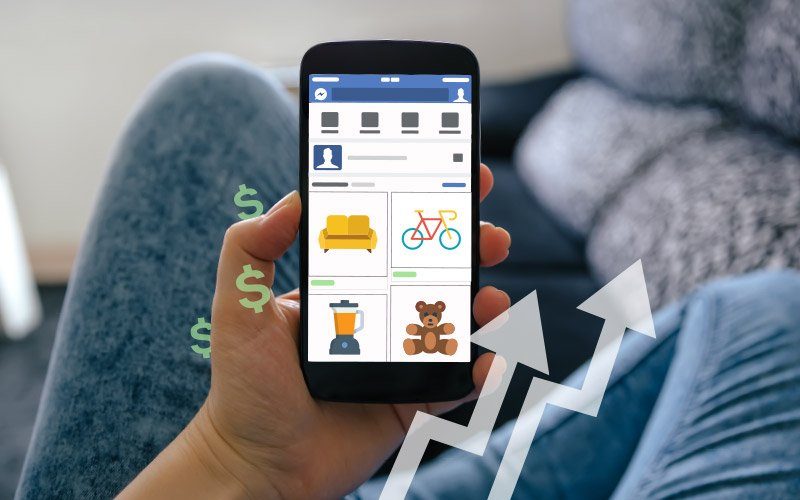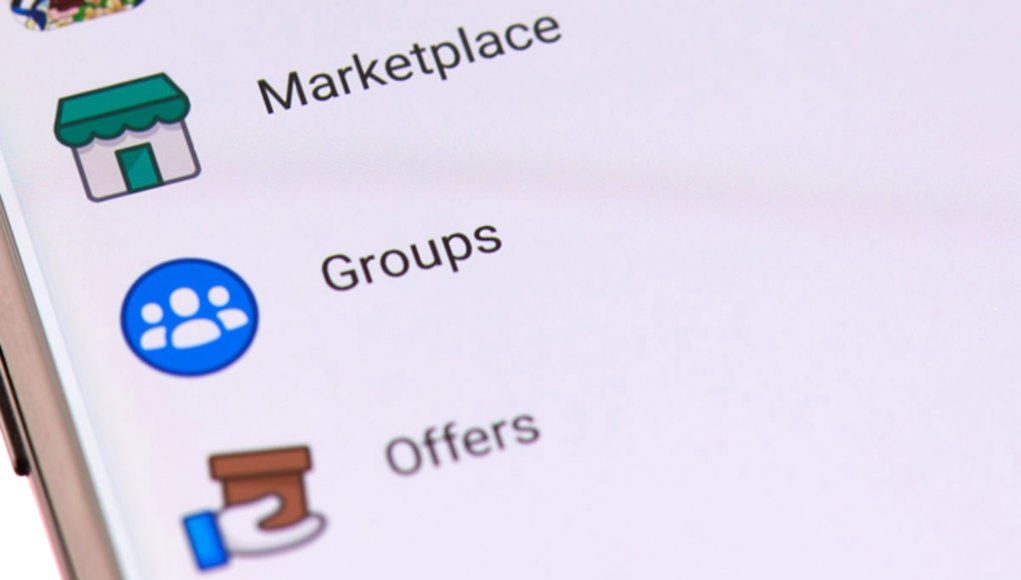Keep reading to get more essential knowledge about Facebook Marketplace for your business.
How to prepare your business page for Facebook Marketplace
 Open a Facebook Page Shop
Open a Facebook Page Shop
All Facebook Marketplace listings should have a Facebook Shop on their business page. Plus for a limited time, there’s a chance that enterprise with shops might have products featured in Marketplace as the rollout unfurls.
Shops are your Facebook storefront. Any business page can have a shop. However, the availability of different features will rely on your location.
Payments on your Facebook Shop could be setup for checkout on your website (or another one like Paypal), or directly on Facebook via integration with Facebook Checkout.
Your shop content could be shared, saved, used in advertisements, and migrated to Marketplace. To open up shop, you’ll need to add at least one product to be reviewed and approved.
Learn how to set up shop here.
Launch a product collection
The products you sell from your shop could be organized into collections. The better organized your collections, the easier it is for customers to seek out and buy products.
You can create special collections just for Facebook, or mirror your collections to match your website’s organization scheme. Products can be added and removed from collections at any time, and you may have up to 50 collections available.
As a common rule, the higher quality the images and the more information you provide in every product description, the better. For maximum effectiveness, follow Facebook’s product image and description guidelines, especially since this can line you up with requirements for potential Marketplace integration later on.
If your business is approved for Facebook Marketplace, products featured in your shop could be distributed in the marketplace feed. Make sure your pictures and text adheres to Marketplace specifications in advance. (Keep in mind: solid background, no overlays.)
Integrate with Facebook Checkout
You can run a shop without Facebook Checkout, but online retailers that need to use Marketplace should add it to their page’s shop. In the meanwhile, this feature is just available to retailers in the US.
Facebook’s payment feature allows people to purchase products directly on Facebook without having to go away the app of website. Payment solutions with less friction automatically improve conversions.
Another advantage to Facebook Checkout is that customer forms are pre-populated, making the checkout process run even smoother.
6 ways to use Facebook Marketplace for your business
Whether listing products or running ads, there are a lot of opportunities for businesses to benefit from the Marketplace channel.
1. Test with Facebook Marketplace ads
Whether or not you’ll be able to list products on Marketplace, ads with placement in Marketplace are a good way for your business to test the waters.
In an effort to grow its business, BarkBox decided to run a split-test marketing campaign to promote its monthly dog treat and toy subscription service. They evenly divided the audience for their ads between News Feed alone and Marketplace and News Feed placement.
The marketing campaign performed markedly better when ads were served in both feeds, with 49 percent greater reach and a 16 percent higher conversion rate.
To create an ad in Marketplace, go to Ads Manager and select reach, traffic, conversions, catalogue sales or video views as your goal. Marketplace isn’t currently available as a placement by itself. That means you need to choose Automatic placements or edit placements to include the News Feed and Marketplace in your marketing campaign.
The recommended specs are the same for both spots.
2. Maximize your budget
Since there’s no cost to list and no reduce on commissions, Marketplace listings are a budget-friendly strategy to promote product sales. However, even in case you don’t have access to list on Marketplace yet, ads in the shopping channel have resulted in decreased conversion costs for brands.
For example, to test Marketplace’s influence on cost-per-conversions, Apartment Guide, a rental listing service, set up two-week trial. The study found that Marketplace ads contributed to a 200 percent lift in conversions and a 45 percent lower in cost per incremental conversion.
3. Offer daily deals and promotions
Facebook has been experimenting with a Daily Deals feature for more than a year, and it’s likely to remain an essential piece of the Marketplace channel.
In August, e-commerce company Daily Steals ran a promotion for Playstation 4 controllers as an early Facebook Marketplace deals partner.
Placement in the deals category translated to five times faster sales for Daily Steals compared with similar offers sold elsewhere. The company also saw a two times higher conversion rate when shoppers used Facebook Checkout as opposed to completing the payment on its website.
4. Launch a new product
Buzz and awareness campaigns are multi-platform for a reason. And if one of your goals is to obtain pre-orders or early registration, Marketplace is a good place to gauge early consideration.
To advertise the upcoming release of Tom Clancy’s The Division 2 Phoenix Shield Collector’s Edition and encourage pre-orders, Ubisoft launched a marketing campaign with ads in Marketplace. The ads focused lookalike audiences based on people. They had recently made a purchase at the Ubisoft store and people who had visited its website.
In two weeks the company was able to unlock a thrill-worthy level of buzz, reaching upward of 3.4 million people.
5. Increase your sales
If you run a small or medium-sized business with less-than-perfect online retail setups, Marketplace can be a good alternative. However, even the largest businesses with the slickest sales features can boost sales by adding another distribution channel to their online retail portfolios.
Beach-themed retailer Tropical Breeze Décor turned to Facebook Marketplace to offset expensive customer acquisition methods and streamline operations. The company now generates 72 p.c of its revenue from the platform.
6. Think beyond sales
Marketplace excels at conversions thanks to its audience of motivated shoppers. However sales are not the only thing you can do on the channel.
For instance, apartment-rental company Apartment List used Marketplace ads to increase registrations on its site. The ad copy targeted shoppers’ mindsets with taglines like: “Moving Soon? We Can Help You Discover Your Next Home.”
The Marketplace ads led to a 17.5 percent higher reach than News Feed ads alone. They also produced a 16 percent decrease in cost per website registration.
More importantly, Apartment List was able to forge a longer lasting connection with prospective customers.
When you plan your next online retail and social media marketing strategy, make sure that your Marketplace efforts align with your overall goals.


